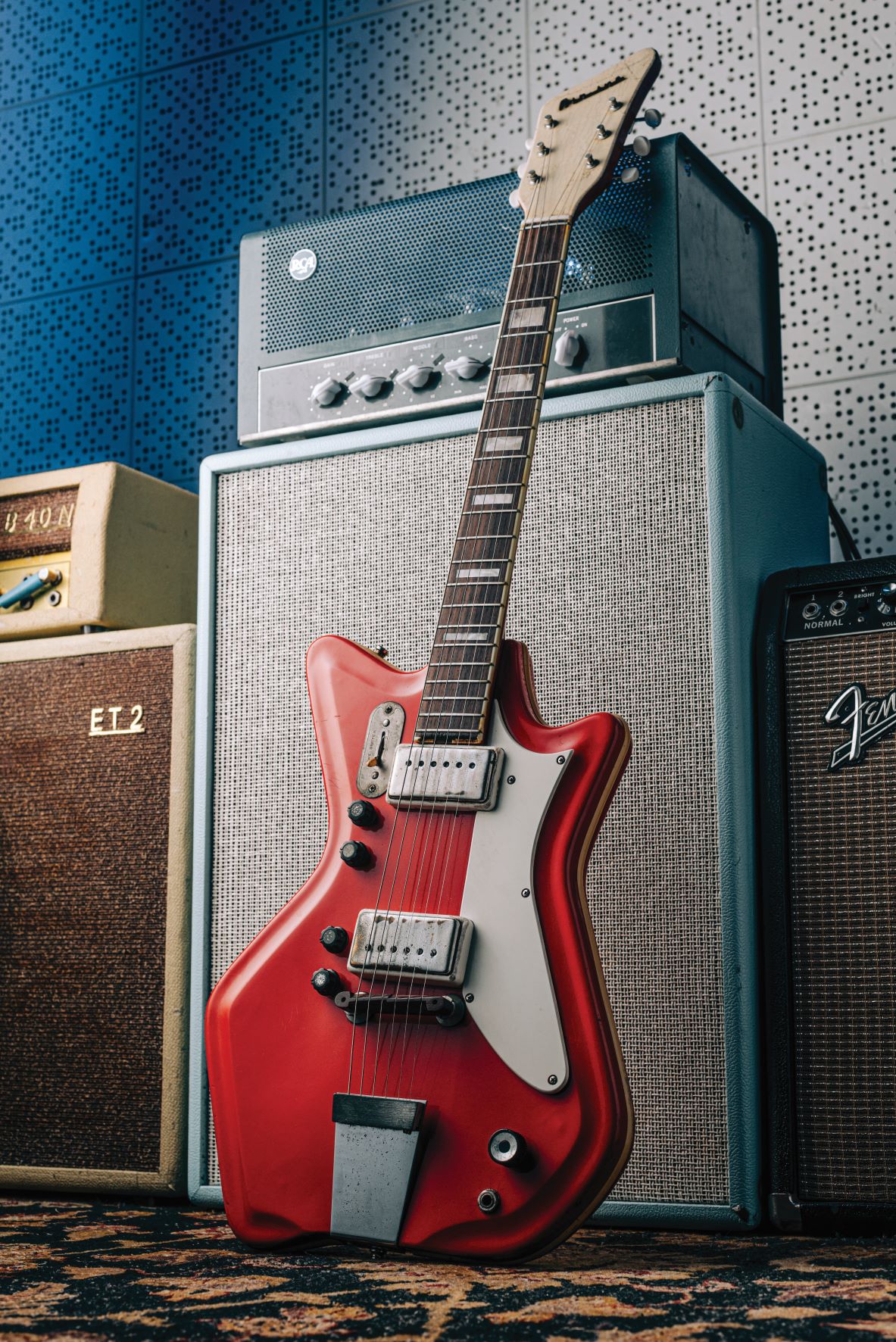“It’s like a Jack White sensibility: ‘I’ll take this crappy guitar and see what happens.’” Alex Lifeson says he still uses his first guitar, a $57 Japanese knock-off
The prog legend wants to be surprised by what leftfield gear choices can bring to a song

For many players, their first guitar is something of a throwaway instrument. There may be great sentimental value attached to it, but those guitars, be they electric or acoustic, are usually cheap, introductory models. As players progress, new and better gear usually takes its place.
While that has certainly been true for Alex Lifeson, the Rush icon never gave up on his first guitar. Nearly 50 years since his parents bought him the cheap Japanese electric guitar, it still has a role to play in the music he writes with his new group, Envy of None.
“There are definitely go-to’s that I prioritize, but I also just like grabbing something that I don’t think is the ‘right’ thing and seeing how that works,” he says in Guitar World’s latest print issue.
“I have the first guitar I ever owned, which my parents bought for me in 1967 for $57. It’s just a cheap Japanese guitar that I had refinished. I pull it up for some things. It’s kind of like a Jack White sensibility, like, ‘I’ll take this crappy guitar and see what happens.’”
He admits that the process doesn’t always bear fruit, but that willingness to experiment is half the reason he’s had such a successful career. Indeed, his Hentor Sportscaster was the result of his tonal and gear-based curiosity. It started life as a humble Stratocaster and morphed into one of his most iconic guitars.
“I replaced the bridge single-coil with a Gibson humbucker, reversed the input jack for easier access, and added a Floyd Rose tremolo to replace the Fender tremolo,” he explains. “I'm more of a humbucker guy, I always have been. Fenders are very, very useful, single-coils are very, very useful, and I've always had them. [But] there were limitations to the Fender.”
Taking a leaf or two from Jack White’s book, Lifeson used a range of guitars on Envy of None's sessions for their second album, Stygian Wavz, just to see if there was magic to be found. Granted, it’s not worked wonders in this instance.
All the latest guitar news, interviews, lessons, reviews, deals and more, direct to your inbox!
“So far, I haven’t had much success, to be honest,” he says, laughing. “But you get what I’m saying. Sometimes, I’ll go for a P90; I’m not normally inclined in that way with guitars, but now I realize that tonality is what it’s all about. I create different tones.”
Indeed, White, who is included in the Rock and Roll Hall of Fame's class of 2025 alongside Soundgarden and Carol Kaye, made cheap guitars cool again with his approach to electrics with the White Stripes.

None prove his point more than his quirky Airline Res-O-Glas "JB Hutto" guitar; one angular in shape and featuring a fiberglass body and edgy (some may say scratchy) dual Valco single-coil pickups. Notably, it was his first guitar.
“I always look at playing guitar as an attack,” he told Guitar Player in 2010. “It has to be a fight. Every song, every guitar solo, every note that’s played or written has to be a struggle.
“The idea behind using the Ward’s Airline in the White Stripes was to prove that you don’t need a brand-new guitar to have character, to have tone, and to be able to play what you want to play. You can do it with a piece of plastic.”

Blues maestro Kenny Wayne Shepherd follows a similar train of thought. He believes all players should start on a “crappy” guitar — whether that then stays by their side moving forwards or not is up to them.
“When you start with a crappy guitar, it begins the cycle of gear addiction,” he told Total Guitar last year. “You appreciate it, but you long for a better instrument. It gives you a level of appreciation because you started with humble beginnings, and then when you make it to the top of the guitar mountain you've appreciated every step along the way and what it took to get there.”
Lifeson may not have had huge success peppering his first guitar on Envy of None’s new record, but his trying is a testament to a snobbishness-free mindset that always guitarists should take when it comes to gear.
A freelance writer with a penchant for music that gets weird, Phil is a regular contributor to Prog, Guitar World, and Total Guitar magazines and is especially keen on shining a light on unknown artists. Outside of the journalism realm, you can find him writing angular riffs in progressive metal band, Prognosis, in which he slings an 8-string Strandberg Boden Original, churning that low string through a variety of tunings. He's also a published author and is currently penning his debut novel which chucks fantasy, mythology and humanity into a great big melting pot.


